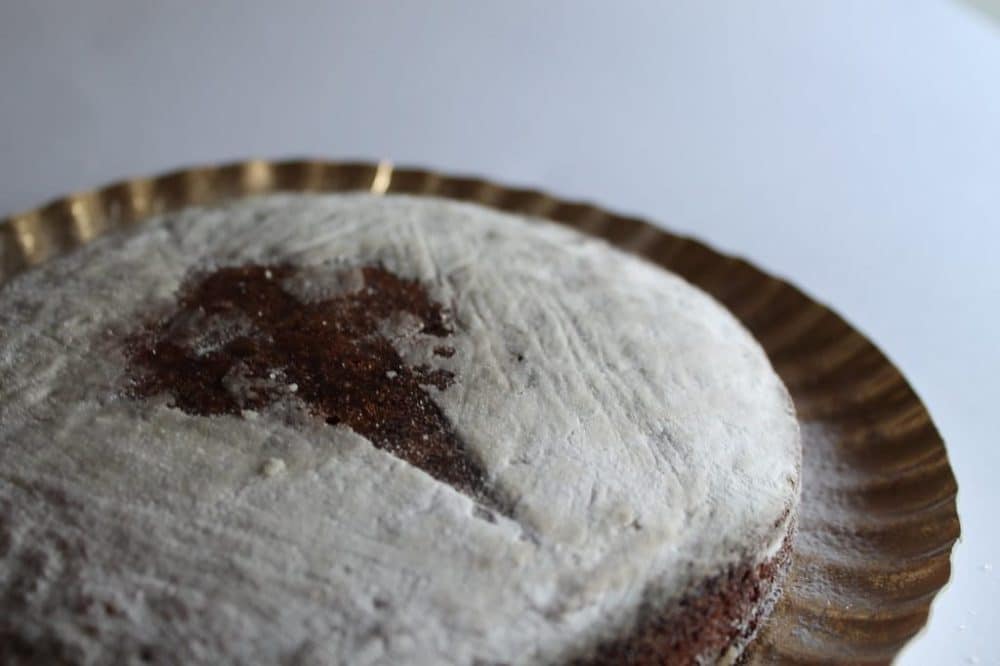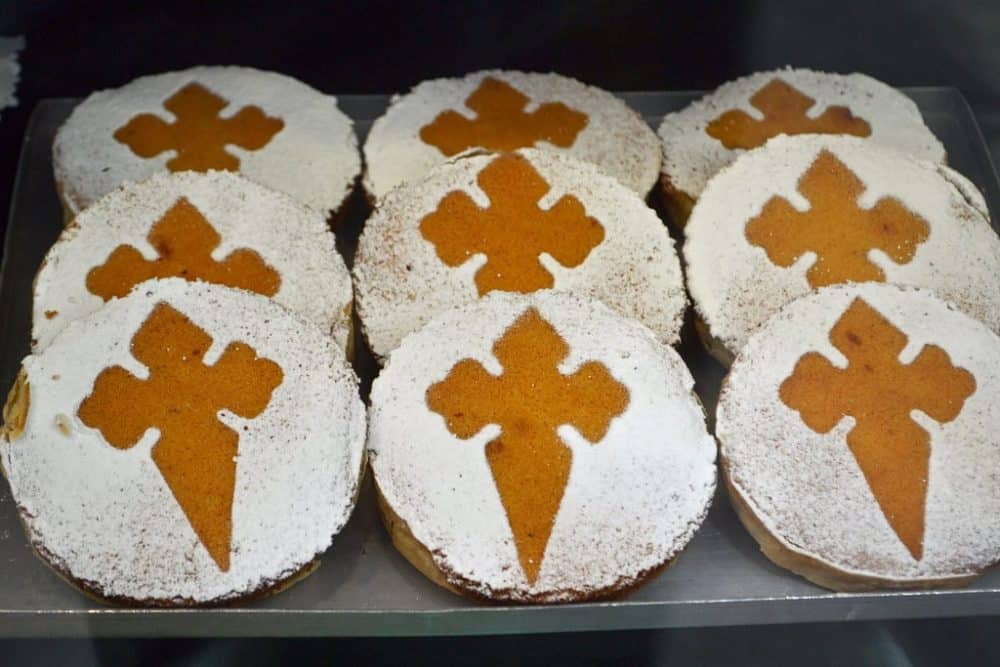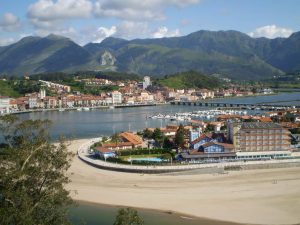
Discover the history of the Tarta de Santiago, a dessert rich in tradition and symbolism across Galicia and even beyond its borders. This sweet treat, known for its distinctive Santiago cross sprinkled over the almond cake, has been a symbol of hospitality and culture on the Camino de Santiago for centuries.
From our organised travel agency for the Camino de Santiago, we will explore the origins and evolution of this famous tart, as well as its deep connection with the Camino. It has always offered pilgrims and visitors a unique perspective on its cultural and spiritual significance. Prepare for a journey that combines flavour, history, and tradition.
Índice de contenidos
Origin and History of the Tarta de Santiago

As a company specializing in the organised journey on the Camino de Santiago from Sarria, we will start by telling you about its history. According to documents, its first official record dates back to the 16th century. More than just a simple dessert, it is an emblem of Galicia’s rich culinary history.
This cake initially was a simple mix of almonds, sugar, and eggs. Gradually, it began its culinary evolution in the kitchens of ancient lodgings where pilgrims travelling to Santiago de Compostela stayed.
Over time, the recipe was refined, adding ingredients that enhanced its flavour, such as lemon zest and cinnamon. Both are elements that today we consider indispensable to achieve the authentic taste of this traditional cake.
The Order of Santiago, influential in many aspects of medieval life in Spain, played a crucial role in popularizing the tart. They promoted it as a symbol of Galician hospitality, essential for the thousands of pilgrims who passed through the region.
The Tarta de Santiago as a Symbol of the Camino

The characteristic cross, decorated with icing sugar on the surface of the cake, has profound symbolic meaning. It represents the sword of the Order of Santiago, an emblem associated with the Apostle James, symbolizing courage, faith, and devotion. For pilgrims, it serves as a sweet reminder of their goal, reinforcing the idea that their journey is nearing its end.
For centuries, it has been a culinary symbol of hospitality for walkers, both on the Portuguese route to the Camino de Santiago de Compostela and other routes, due to its popularity and ease of preparation. It has been offered as an energy-boosting and comforting treat for pilgrims.
Over time, its representation in the culture of the Camino has evolved, from simple undecorated cakes to refined versions that honour tradition. As you can see on any map of the Northern Camino, the Tarta de Santiago is firmly linked to religious festivities and rest points on the pilgrim routes.
Artisanal Production and Modern Variations
The Tarta de Santiago follows an original recipe. According to tradition, it must include almonds, sugar, eggs, and lemon zest. These ingredients must be of the highest quality to achieve the moist texture and distinctive flavour.
Local variations may include additional ingredients such as cinnamon or liquor, but the balance between the almonds and the sweetness is essential to preserve the authenticity of the recipe. You may find differences if you do the Camino de Santiago from Tui compared to the Northern Camino, for example.
The tart holds a Protected Designation of Origin (PDO), established in 2006. This regulates the quality requirements for producers and ensures that only those that meet the established criteria can bear its name. This provides protection to the legacy of this Galician dessert and ensures that pilgrims and visitors always enjoy a genuine and delicious product.
In contemporary local cuisine, the Tarta de Santiago is integrated not only as a traditional dessert but also in innovative forms. Chefs reinterpret it in creative dishes as part of their gastronomic offerings. There are mini tarts, ice creams, and versions that reflect the evolution of this classic in the modern kitchen.
Where to Taste the Authentic Tarta de Santiago on the Camino
Tasting the Tarta de Santiago in its place of origin is a pleasure that no pilgrim or visitor should miss.
In Santiago de Compostela, traditional pastry shops offer authentic versions following the ancestral recipe. Here, the fragrance of freshly ground almonds and the perfect balance of sugar make every bite unforgettable. Beyond the city, on the Camino de Santiago, French Route, you will find other iconic places where you can enjoy this delicacy.
The quality and authenticity of these tarts, made with care, allow travellers to immerse themselves in the Galician culinary experience. They are an integral part of the journey to the cathedral to celebrate the culmination of the journey with a sweet and well-deserved treat.
Recommendations to Distinguish the Authentic Tart
- Ingredients: ensure that the tarts are made with quality almonds, sugar, eggs, and lemon zest, without flour or other filling ingredients.
- Texture: The authentic Tarta de Santiago should be moist and firm, with a slight crunch on the outside and a soft texture inside.
- Santiago Cross: the symbol should be clearly outlined in icing sugar, representing the sword of the Order of Santiago.
- Designation of Origin: Look for the PDO seal, which guarantees the authenticity of the recipe and quality standards.
- Pastry Shops: Taste the tart in recognized pastry shops in Santiago de Compostela or other iconic places along the Camino.









